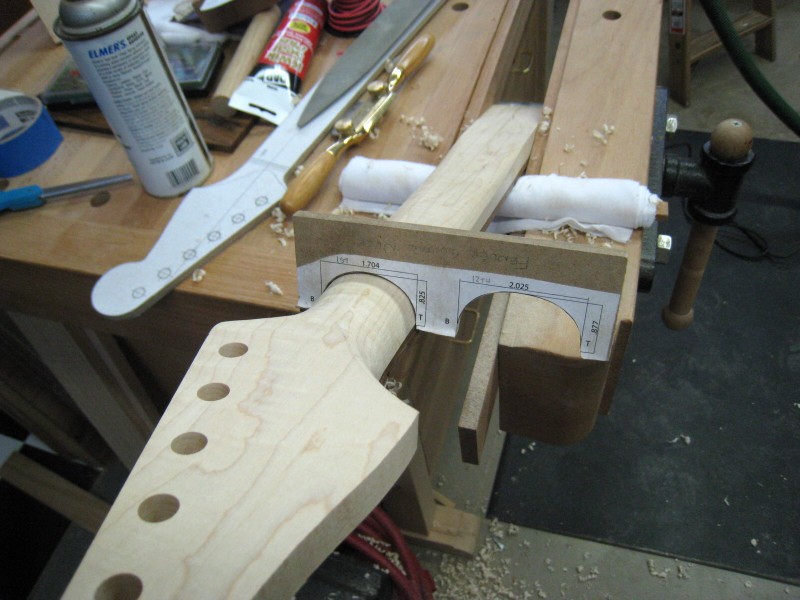If you are building one for yourself, that's about right. I used to take about 3-4 weeks to sneak up on what I found to finally like. Rough it out, sand to 80 or 100 grit and play with it for a couple of weeks. Those needle rasps are great for taking a little more off quickly. The old geezer about 15 years ago taking just a little more off an A5 with the half round needle rasp...

For customers, I would tell them to use the solder method (with protection) and have them fit the templates before they sent them to me. If they couldn't handle that, I told them to take it to a repair shop to have the templates made. Hard cardstock was good enough for that.
One thing I found that a lot of builders don't get is to take the radius right up to the top of the fretboard. You most always taper the binding some. If you don't, you end up with a fatter neck and a flat at the binding.
Another thing that a lot of builders don't consider is what the curve of the heel looks like at the neck joint. There is no recurve in the area below the fretboard. To have that recurve just means a fatter neck too.

Note that the heel/box joint is concave all the way to the top of the fretboard. Many times I found myself taking more and more out of the heel to help shape the rest of the neck.









